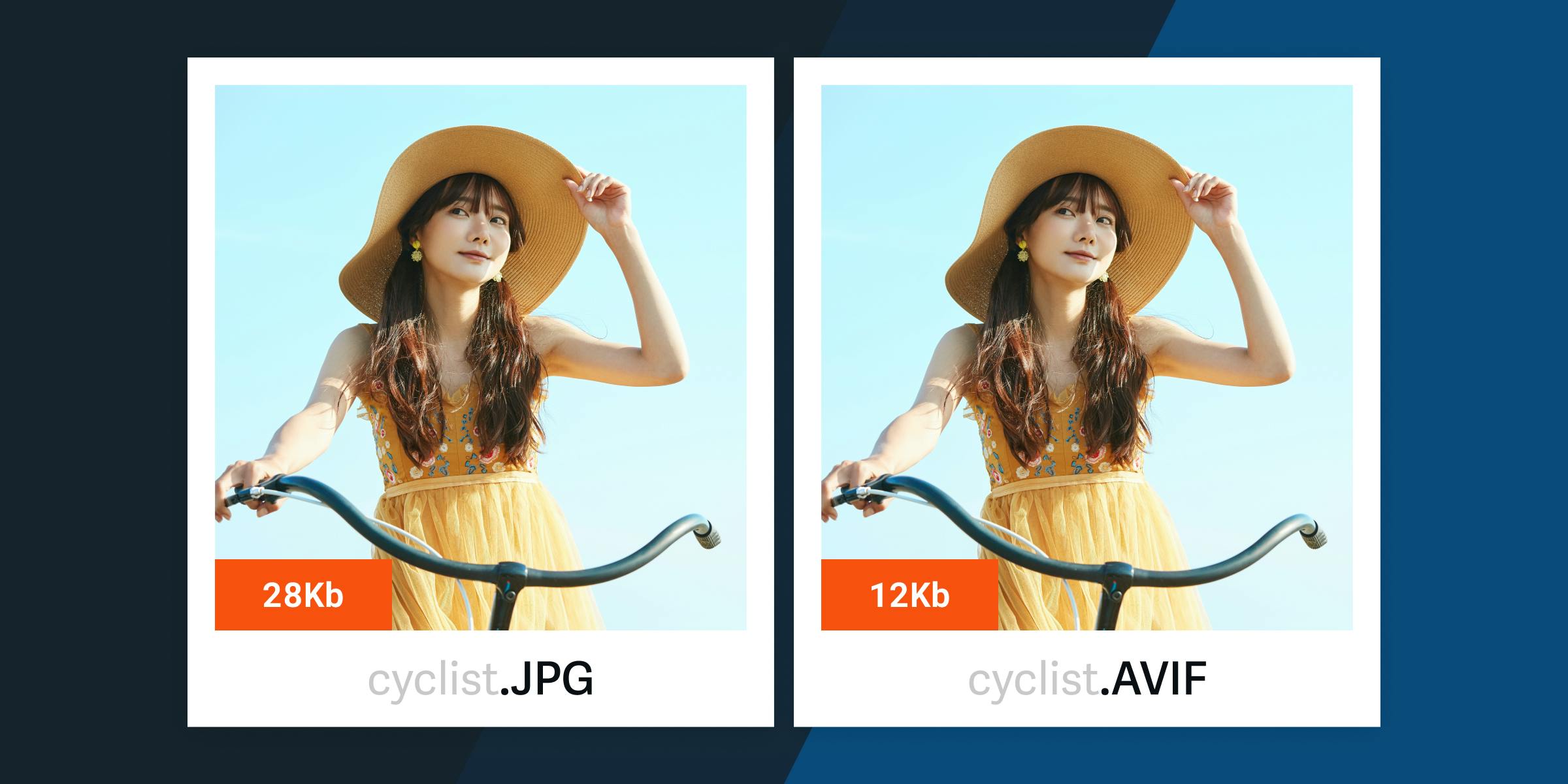
AVIF is one of the most exciting web technologies in recent years. Yet it remains a blind spot even for some of the most advanced companies we talk to. Many of you have gotten confusing or conflicting information as you learned about it.
In this article, we want to offer you a concrete assessment of AVIF and clarify much of the confusion around it. But most importantly, we want to help you see the true value of your images and how to unlock it. As complex as AVIF and image optimization might be, you don’t have to become an expert to see the value they can bring and how to take advantage. By the time you finish reading, we hope you'll feel empowered to decide whether AVIF is the right choice for your needs. As always, let us know if you have further questions, and we're here to guide you with all your image processing needs.
What is AVIF?
AVIF, or AV1 Image File Format, is an image format developed by the Alliance for Open Media. Built on the AV1 video coding format, AVIF embodies the cutting-edge of image compression technology, delivering superior-quality images at smaller file sizes.
Since the launch of our AVIF conversion feature in 2022, many of our customers have seen file sizes drop by nearly 60% when they convert JPEG files to AVIF. In a study by Unsplash, they were able to decrease file sizes by 30% by converting WebP files to AVIF.
At @unsplash we're now serving images in AVIF format (if the browser supports it), thanks to @imgix! Lab data shows a ~30% decrease in image sizes. 🎉 pic.twitter.com/ErmBowKW5K
— Oliver Ash (@OliverJAsh) September 23, 2021
Through the use of the 'auto=format' parameter, imgix will automatically serve images in AVIF for all browsers that support it. For browsers that don’t yet support it, the imgix Rendering API will fall back to the next-best available format, so you never have to worry about choosing between image formats.
Why Is AVIF Important and Exciting?
AVIF offers a number of advantages over older image images such as JPEG. As this format continues to develop, the advantages are likely to grow even further.
1. Higher Compression Ratio: As discussed in the previous section, images encoded in AVIF are, on average, 30% smaller than WebP with no loss in quality. Because of the phenomenal performance gains, AVIF has rapidly gained support from most major web browsers, such as Chrome, Safari, and Firefox.
2. More Advanced Features: In contrast to JPEG, AVIF supports animations, alpha transparency, and overlays. It also supports a wider color gamut, allowing for richer and more vibrant images, preserving the quality that modern cameras can capture, which is often lost in formats like JPEG.
3. Continuously Improving Encoding Speed: AVIF is developed with multicore processing in mind. As multicore CPU chips continue to improve, we expect AVIF encoding times to improve significantly and soon surpass JPEG and PNG. Even though AVIF doesn’t support progressive rendering, with its much smaller size, AVIF should be downloaded and displayed much faster than JPEG or PNG files in most cases.
AVIF is the proverbial stone that can kill many birds. With its powerful compression, AVIF can help your website load faster, and reduce bandwidth consumption, thereby lowering bounce rate, improving SEO, and increasing customer satisfaction.
OneFootball, a German-based football media company, saw page load time accelerated by 26%, and First Time to Interactive (TTI) accelerated by 24% after enabling automatic AVIF conversion with imgix.
Why You Haven't Heard About AVIF
If you haven’t heard about AVIF, or have gotten conflicting information, you are not alone. Many legacy solutions, including a few prominent CDN providers, seem reluctant to discuss AVIF or embrace this transformative technology. But why?
Reason 1 - Business Model Entrenchment
Many CDNs have a business model that relies on bandwidth consumption pricing, a legacy from the early days of the Internet when pricing was primarily based on data transmission volumes. This approach allowed for a flexible model that scaled with usage. However, this is now clashing with bandwidth-reducing technologies like AVIF, which threaten to disrupt the established revenue streams of these CDN providers. Unless these providers revamp their pricing model, their business incentives are increasingly misaligned with your best interests.
Reason 2 - Reluctance to Innovate
The development of AVIF technology requires substantial investments in resources. AVIF is 8-10x more expensive to compress than JPEG. Its computational complexity demands a deep understanding of image compression theories and a commitment to research and development to hone the necessary algorithms and techniques. Sadly, many CDNs are reluctant to make such investments, as a result holding back the widespread adoption of this promising technology.
The imgix Difference: Future-Proof Your Images
At imgix, our focus is on your success. We believe in equipping you with the best technology so you're always maximizing the value of your images.
We understand that images are the most valuable assets for today's web businesses. That's why we've designed our model to prioritize visual media optimization over traditional bandwidth pricing. This approach gives you the flexibility to utilize formats like AVIF, based on your needs.
In essence, the benefits of AVIF are hard to ignore. By partnering with imgix, you get a reliable ally that understands the evolution of web technology and helps you stay ahead of the competition.
- For more details about this feature, check out our documentation.
- To get a demo, please reach us at sales@imgix.com.
- To test out AVIF today, simply create a free account.





